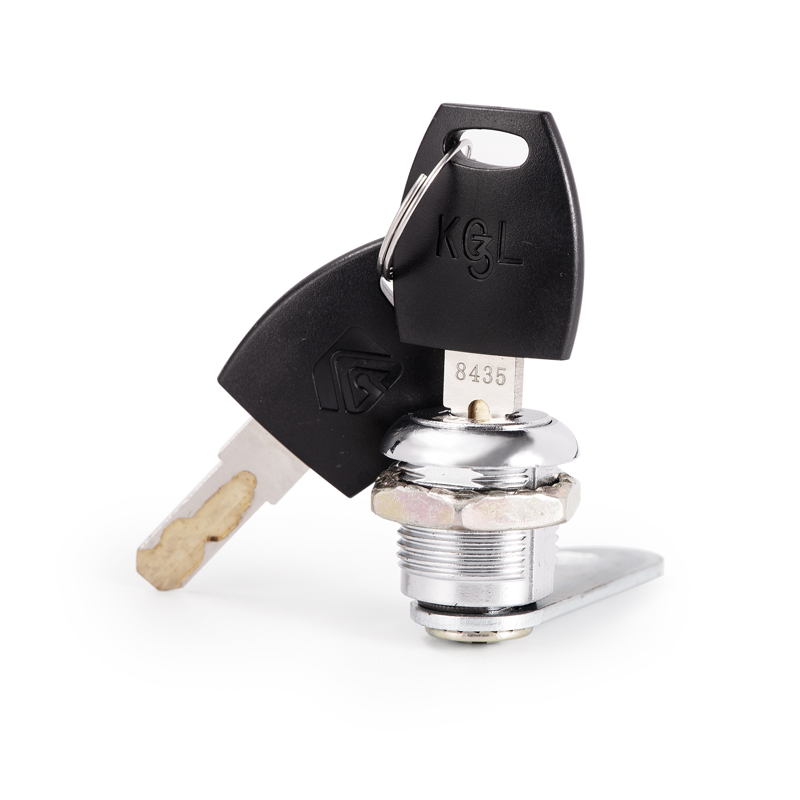The interchangeable core lock differs from traditional lock systems in several ways that enhance user convenience:
1.Key Replacement and Rekeying Efficiency:
Interchangeable Core (IC) Locks: The modular design of interchangeable cores facilitates swift key replacement or rekeying. This is particularly advantageous in scenarios where key compromise or personnel changes necessitate immediate alterations to the lock's access credentials. The ability to accomplish these tasks without removing the entire lock assembly streamlines the process, minimizing disruption to regular operations.
Traditional Locks: In contrast, traditional locks often require substantial disassembly for key replacement or rekeying, leading to increased time investments and potential operational disruptions. This method may not be as conducive to the rapid response required in dynamic security environments.
2.Modularity for Easy Upgrades:
Interchangeable Core Locks: The modularity of interchangeable core locks empowers users to implement security upgrades seamlessly. By replacing or upgrading the core, users can adapt their security systems to evolving threats or compliance standards without the need for extensive overhauls. This modular approach is both cost-effective and minimizes the impact on existing infrastructure.
Traditional Locks: Traditional locks, when subjected to security upgrades, often necessitate the replacement of the entire lock assembly. This can result in higher costs and logistical challenges, especially in large-scale security deployments.
3.Keying Flexibility:
Interchangeable Core Locks: Keying flexibility is a notable feature of interchangeable core systems. Users can maintain a single set of keys while managing access control by swapping out cores as needed. This flexibility is particularly valuable in complex security ecosystems, such as those employing master key systems.
Traditional Locks: Traditional locks typically have a one-to-one correspondence between keys and locks. This can complicate key management in environments with diverse access requirements, requiring users to manage multiple sets of keys.
4.Access Control Management:
Interchangeable Core Locks: The ease with which cores can be replaced or rekeyed in interchangeable core locks significantly simplifies access control management. This streamlined process allows users to promptly respond to changes in personnel, security clearances, or the need to restrict access to certain areas.
Traditional Locks: Traditional locks may involve a more cumbersome process for altering access control parameters, potentially leading to delays in adapting to evolving security needs.
5.Reduced Downtime During Key Changes:
Interchangeable Core Locks: The modular nature of interchangeable core locks minimizes downtime during key changes. Since only the core needs to be addressed, the impact on operational continuity is mitigated.
Traditional Locks: Replacing or rekeying traditional locks typically requires more extensive procedures, resulting in longer periods of downtime. This can be a critical consideration in environments where uninterrupted access is paramount.
6.Ease of Maintenance:
Interchangeable Core Locks: Routine maintenance tasks, such as lubrication or core replacement, can be executed with minimal disruption. The simplicity of accessing and servicing the core contributes to a more efficient and less intrusive maintenance process.
Traditional Locks: Maintenance procedures for traditional locks may involve disassembling the entire lock, potentially causing more significant disruptions and requiring additional time and resources.
7.Key Control and Duplication Prevention:
Interchangeable Core Locks: Interchangeable core systems often incorporate robust key control measures, reducing the risk of unauthorized key duplication. This enhances overall security by providing users with greater confidence in key management.
Traditional Locks: Traditional keys, if not managed meticulously, may be more susceptible to unauthorized duplication, potentially compromising the integrity of the security system. The lack of centralized control in key distribution can be a concern for users seeking heightened security measures.
B801 THREE-LEVEL MANAGEMENT LOCK

B801 THREE-LEVEL MANAGEMENT LOCK



 English
English 中文简体
中文简体
















